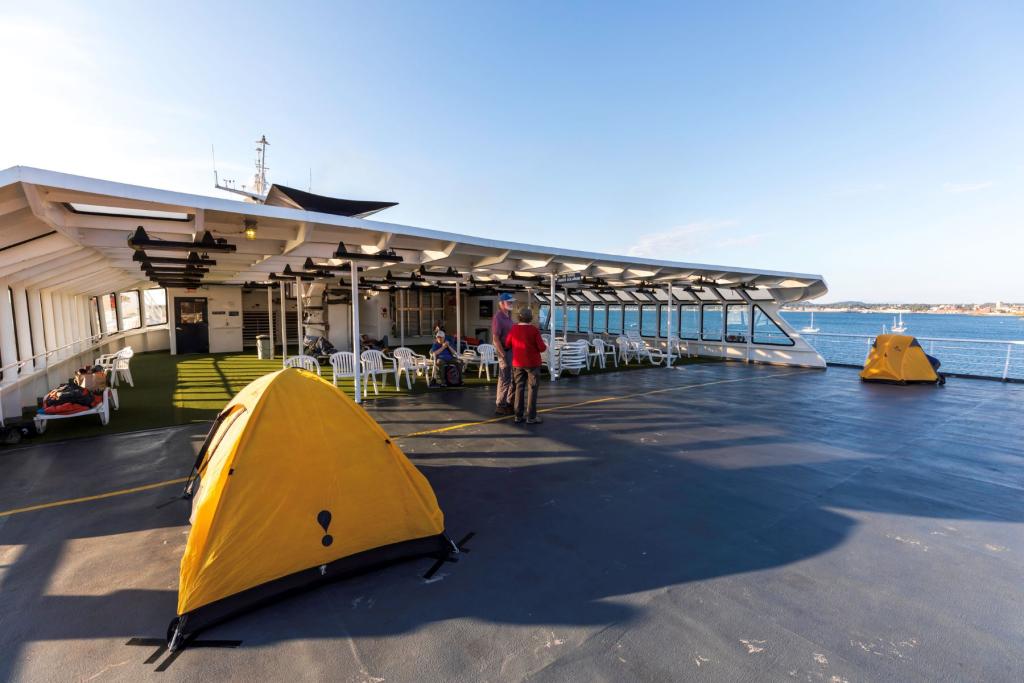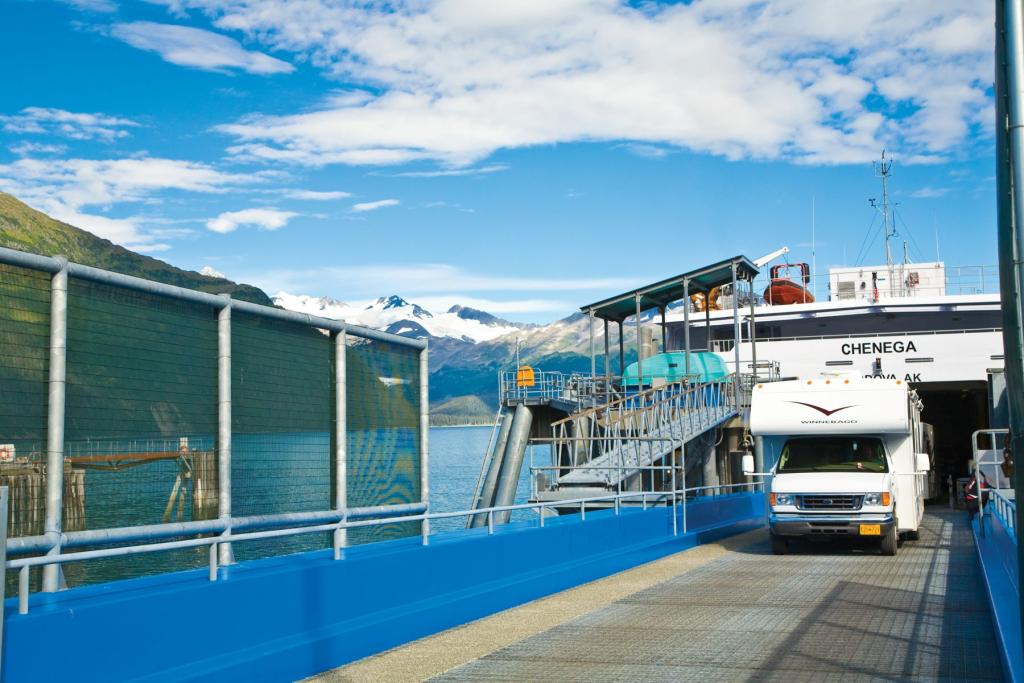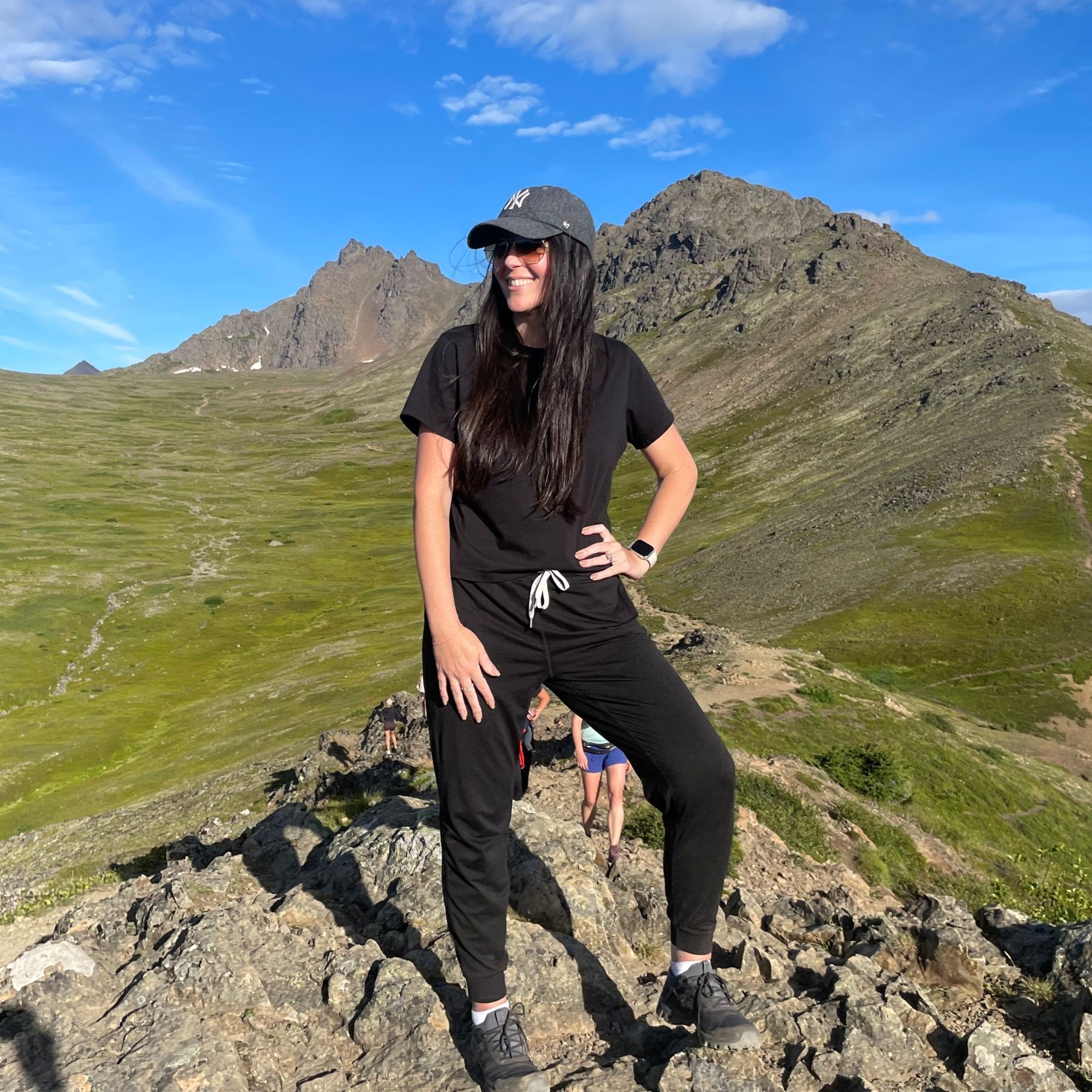Your Guide to the Alaska Marine Highway Ferry System
In Alaska, highways aren’t just on land. The Alaska Marine Highway – a ferry system spanning 3,500 miles of coastline with service to over 30 communities – is an integral part of Alaska’s transportation system. The ferries that sail these water highways are varied, with different types of vessels providing different services and routes. Whether you’re looking for an independent way to travel to Alaska from the Lower 48 by water or want to visit one of our many coastal communities, the Alaska Marine Highway is a truly unique way to get there! The ferry is also a crucial mode of transportation for local Alaskans, connecting communities and providing a way to transport cars and other vehicles to destinations off of the road system.
Ferry passengers can walk on, bring their bikes or kayaks, or drive on their motorcycles, cars, and motorhomes. Not all vessels can accommodate lager vehicles, so it is recommended to check specific routes online to make sure they can accommodate your vehicle.

Ferries and Routes
There are several ferry routes ranging from quick Shuttle Routes to multi-day Mainline Routes, served by a fleet of around 10 vessels. Each route has different travel times and ports of call. Travelers can board/disembark at any of the 30+ ports and link different routes to create the itinerary they are looking for. Some routes run every day, while others take several days to complete, serving some ports of call just once a week.
Mainline ferries are the largest vessels, and sail thousands of miles from Bellingham, WA through to the Aleutian Islands to Dutch Harbor, touching many major ports of call along the way. Routes include the Southeast (Inside Passage, spanning from Bellingham to Skagway), Gulf of Alaska (Prince William Sound and Kenai Peninsula), and Southcentral/Southwest (Homer to Kodiak Island to the Aleutian Chain), spanning the entire southern coastline of Alaska.
Within the Mainline Routes, Day Boats and Shuttles run on smaller ships and shorter routes, bringing passengers to several communities in the Southwest and Southcentral regions. These ferries provide quicker access between some ports of call, along with access to some ports not served by the Mainline Routes.

What to Expect Onboard
Throughout your voyage, regardless of your destination, wildlife and one-of-a-kind scenery await you. The coastline of Alaska offers an abundance of mountains, islands, rainforest, and glacier views, along with wildlife sightings including whales, seabirds, and otters.
Private cabins can be reserved for passengers on multi-day, overnight sailings. Many vessels offer basic cabins with bunk beds and private bathrooms, while some have shared bathrooms. Cabin reservations are not required but they are recommended for overnight sailings. Otherwise, passengers can sleep on recliner lounges inside the cabin, or bring tents onboard to camp in covered solariums or on the upper outer decks. Passengers are not allowed to access the car deck while the ferry is enroute, so you are not allowed to sleep in your car or RV.

Showers, bathrooms, and even laundry units are available onboard some vessels. Additionally, food and beverage services, vending machines, and a variety of hot and cold food items are also available onboard. Some vessels even provide full-service dining rooms serving up entrees like fresh Alaska seafood to make your trip more relaxing and enjoyable. Passengers are welcome to bring their own food, but refrigeration on board is not available. Specific seats are not reservable in advance, but passengers are welcome to move about the decks and enjoy a variety of comfortable inside seating in cabins and the dining area, as well as outside seating in the covered solarium and on outer decks. Visit the Travel Policies page for more information on facilities, onboard dining, and more.

Car Transport
Passengers can transport motorcycles, cars, RVs, and trailers onboard the Alaska Marine Highway Ferries, but some vessels cannot accommodate larger vehicles. You’ll be asked to provide your vehicle’s length when booking which will determine space availability, pricing, and any vessel/port compliance for specific sizes. Reservations for any vehicle over 30 feet must be made over the phone. Cars are parked on the car deck and are not accessible while the ferry is enroute.

How to Book
Timetables and schedules vary from year to year, so it’s important to do your research and check the ferry schedule once it has been released for that year before planning your itinerary. The Alaska Marine Highway System offers online booking and it is highly recommended and/or required to book in advance for certain vehicle types, including trailers and larger vehicles.
There are several ways to look at the ferry schedule: the Sailing Calendar, which provides a month snapshot of all sailings and can be sorted by port and vessel; the Colored Schedule Grid, which lists out port communities along each route, color-coded by vessel and sortable by region and vessel; or the Sailing Search, where you can enter your route, dates, and vehicle to see what’s available.
If you are researching routes to see what’s available, the Colored Schedule Grid is a good place to start. You can quickly browse through all of the routes to see which communities are served, how long it takes to sail between communities, and what days/times ferries depart from those communities. The Sailing Search is the most straightforward if you know exactly where you want to go and that the ports are connected on a route. Once you select your route, available sailing days will appear on the calendar in blue. If there are no sailing days for that route, no sailing days will appear on the calendar.
When you are ready to book, you will go to the Sailing Search page and input your information, including number of passengers and their ages, type of vehicle (you can leave this blank if you are walking on), and route. You can add multiple route segments if you are booking a round-trip sailing or connecting multiple routes. You will then be taken to the Availability Page, which shows you which sailing times are available and breaks out the price. Next, you will have the option to book an overnight cabin, if available, and add on any extras like bringing aboard bikes, kayaks, or indicating if you are bringing a pet on board (visit the Travel Policies page for important information about traveling with your pet). You will then complete the booking process by adding passenger and payment information.
If you’re feeling overwhelmed, don’t fret! You can call or email the Alaska Marine Highway Ferry System to connect with reservation agents that will walk you through your options for stress free planning.
HELPFUL LINKS:

Alaska: AKA Your Next Adventure
Where will your Alaska adventure take you? Order our Official State of Alaska Vacation Planner and plot your course.


